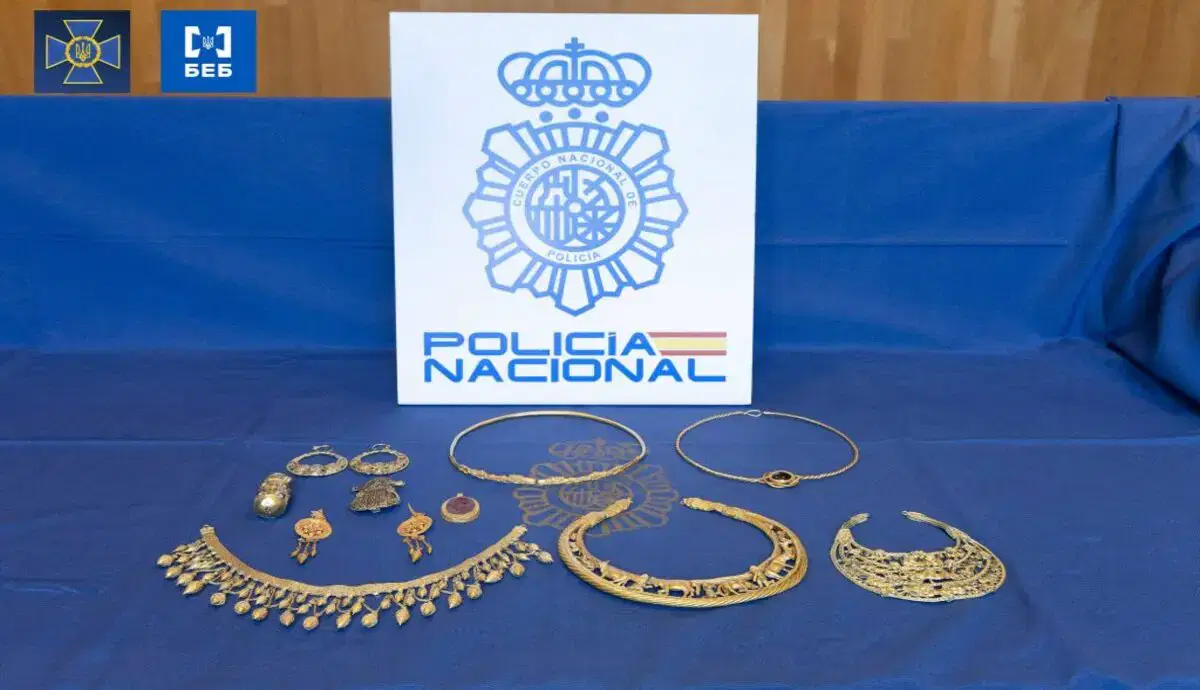
Greco-Scythian artifacts allegedly belong to Ukraine and are worth tens of millions of dollars. Overall. the pieces date back to the 4th and 8th centuries B.C.E. Between 2009 and 2013 the items were a part of Kyiv museum collection, before they “illegally left” Ukraine in 2016. This happened prior to the present war but after Russia annexed Crimea.
Greco-Scythian Artifacts Worth $63 million

Finally, after so many years, Spanish police managed to get ahold of the pieces. On October 23 Spain’s National Police and the Security Service of Ukraine released a press statement. This agency is also the primary intellect of the nation. Police officers carried out a task that resulted in the seizure of eleven pieces of gold belonging to Ukraine in Madrid.
The estimated worth of the missing pieces is €60 million ($63 million). “The jewelry ended up in the possession of [an] Orthodox priest who, in collusion with a second individual of the same nationality and the help of third parties, falsified documents that created the origin of the cultural property and accredited its ownership”, police said.

Get the latest articles delivered to your inbox
Sign up to our Free Weekly NewsletterSpanish authorities explained when the investigation started. The turning point was when officers discovered that a Ukrainian resident of Madrid traded the costly jewelry. They seized the first piece in 2021. This was a belt with ram heads. The authorities also took into custody five accused people. Three of them are Spanish nationals and two of Ukrainian nationality.
Not Many Uncovered Artifacts of This Kind

Authorities described the activity as “breaking up a criminal organization”. As they also said, this system is committed to the illegal trade in Ukrainian cultural assets. “These are pieces that cannot be sold through the usual legal channels, such as auction rooms For this reason, the jewels were incorporated into the capital of different commercial companies”.
Then the statement contiuned:”…created specifically, in order to give them a legal appearance and thus facilitate their commercialization by a group of investors”. On the other hand, some experts doubt the artifact’s provenance. Leonid Babenko, an archaeologist at the M.F. Sumtsov Kharkiv Historical Museum in Kharkiv, said the pieces were “clumsy fakes”.

Caspar Meyer, an archaeologist who has written a book on Greco-Scythian art, recalls believing the gold objects were “modern imitations” when they were first seen in a religious institution building in Kiev in 2011. But he also said if are true, their value is more than 60 million. Also, there are not many recovered artifacts of this kind because ” they are usually buried more than 60 feet underground and difficult to excavate”.
